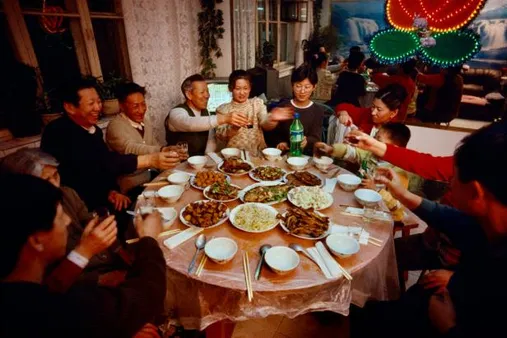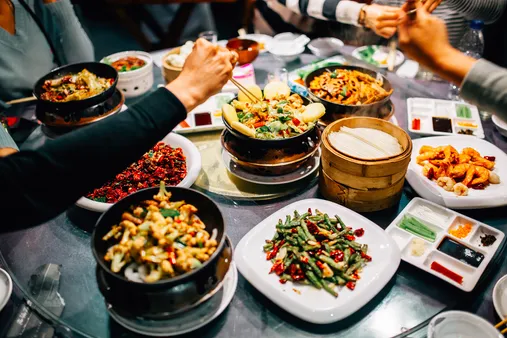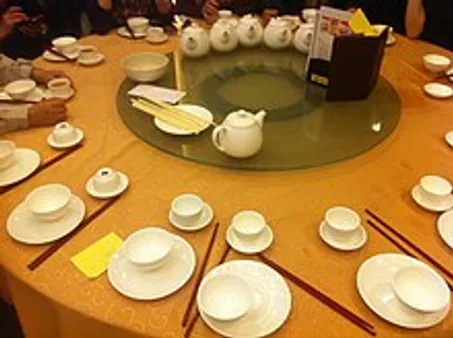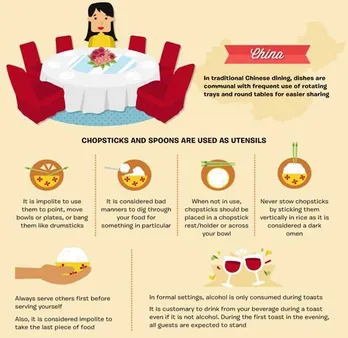Table of Contents
Step into the world of Chinese dining etiquette and customs, where every meal is an opportunity to immerse yourself in a rich cultural tapestry. From the delicate art of using chopsticks to the intricacies of table conversation, the etiquette of Chinese dining weaves a web of tradition and respect. At Tauhuichiban, we believe that understanding these customs is an essential part of appreciating the beauty and depth of Chinese cuisine. Join us on a culinary journey as we explore the nuances of Chinese dining, from the bustling streets of Beijing to the serene teahouses of Hangzhou. Whether you're a seasoned traveler or a curious foodie, this guide will provide you with the knowledge and insights to fully embrace The etiquette and customs of Chinese dining.

The Etiquette and Customs of Chinese Dining: A Guide to Enjoying a Chinese Meal
I. Dining Etiquette in China: Respectful Dining Customs
Table Manners
- Using chopsticks
- Holding your bowl
- Sharing dishes
- Ordering food
- Paying for the meal
Conversation and Etiquette
- Greetings
- Table conversation
- Respect for elders
- Gift-giving

Dining Etiquette in China: Respectful Dining Customs
II. The Significance of Seating Arrangements
Seating arrangements in Chinese dining culture are not arbitrary but reflect the importance of social hierarchy and respect for elders. The host typically sits at the head of the table, with the most honored guests seated on their right and left. Younger guests and those of lower social status are seated further down the table.
This seating arrangement ensures that everyone has a clear view of the host and can easily participate in the conversation. It also allows the host to show their respect for their guests by giving them the best seats at the table.
- The Best Chinese Food Blogs and Podcasts
- The Most Common Chinese Food Allergies and Intolerances

The Significance of Seating Arrangements
III. Communal Dining: Etiquette and Table Manners
Communal dining is a social event that involves sharing food with others. It can be a formal or informal occasion, and the etiquette and table manners involved can vary depending on the culture and setting. In general, however, there are some basic rules of etiquette that apply to most communal dining situations.
One of the most important rules of communal dining is to be respectful of others. This means being mindful of your own behavior and how it may affect others. For example, it is important to avoid talking loudly or interrupting others while they are speaking. It is also important to be considerate of others' food choices and to avoid making negative comments about their food.
Rule | Description |
|---|---|
Be respectful of others | Be mindful of your own behavior and how it may affect others. |
Avoid talking loudly or interrupting others | Be considerate of others' conversations. |
Be considerate of others' food choices | Avoid making negative comments about others' food. |
Another important rule of communal dining is to be clean and tidy. This means washing your hands before eating, using clean utensils, and not leaving food or trash on the table. It is also important to be respectful of the dining space and to avoid making messes.
Finally, it is important to be patient and understanding when dining with others. Not everyone has the same dining habits or preferences, and it is important to be respectful of differences. If you are unsure about something, it is always best to ask rather than assume.

Communal Dining: Etiquette and Table Manners
IV. The Etiquette and Customs of Chinese Dining
V. Table Manners
- Using chopsticks
- Holding your bowl
- Sharing dishes
- Ordering food
- Paying for the meal
VI. Conversation and Etiquette
- Greetings
- Table conversation
- Respect for elders
- Gift-giving
VII. Regional Customs
- Northern China
- Southern China
- Eastern China
- Western China
VIII. Special Occasions
- Chinese New Year
- Mid-Autumn Festival
- Qingming Festival
- Dragon Boat Festival

Communicating Respect Through Gestures
IX. Conclusion
Understanding the etiquette and customs of Chinese dining is essential for a respectful and enjoyable dining experience. By observing proper table manners, engaging in appropriate conversation, and being aware of regional variations, you can demonstrate your appreciation for Chinese culture and make a positive impression. Remember, Chinese dining is not just about the food; it's about connecting with others, sharing in a communal experience, and honoring tradition. Embrace the customs and etiquette, and you will be richly rewarded with a deeper understanding and appreciation of Chinese dining culture.